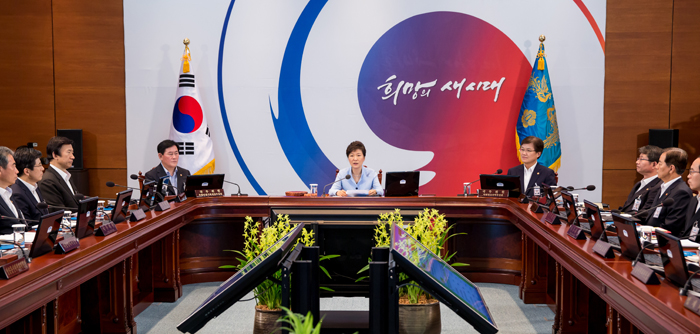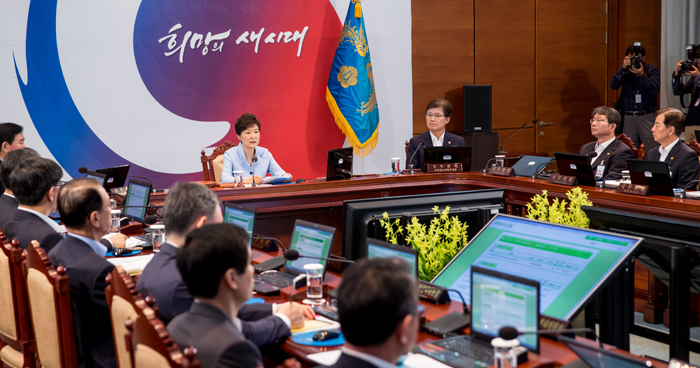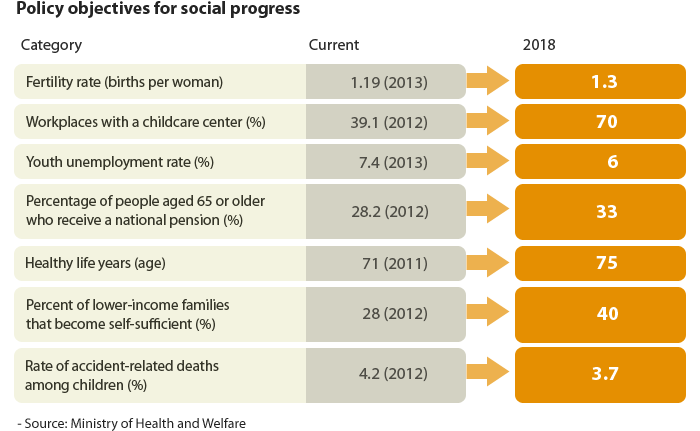

The government approves the country's first set of social welfare policy goals during a cabinet meeting on August 5. Under the new plan, it intends to spend KRW 316 trillion between now and 2018. (photos: Cheong Wa Dae)
Under the plan, ten ministries, including the Ministry of Health and Welfare, the Ministry of Strategy and Finance, the Ministry of Education and the Ministry of Employment and Labor, will spend KRW 316 trillion on 211 projects designed to achieve three policy goals: create a social safety net, help low-income families become self-sufficient with employment and establish a sustainable social welfare system.
Social welfare policy goals (2014-2018)
|
Policy goal |
Plans |
|
Create a social safety net |
- Provide additional support to at-risk pregnant mothers - Introduce temporary or hourly childcare services; expand afterschool activities at elementary schools - Place career counselors at all middle and high schools - Expand health insurance payments to cover four major diseases - Provide a basic pension for up to 70% of the elderly population; offer more jobs for seniors - Expand bilingual education for multicultural families |
|
Welfare through employment |
- Introduce an apprentice system for youths; expand public sector jobs for young adults - Expand the number of women who take maternity leave; provide more flexible-hour jobs - Extend the retirement age to 60 |
|
Establish a sustainable social welfare system |
- Set up a long-term financing goal for the national pension plan - Create 6,000 government jobs focusing on social welfare; improve labor conditions at those positions |
If everything goes smoothly, the portion of medical expenses not covered by health insurance is expected to fall, from 35.2 percent in 2011 to 33 percent by 2018. The country's fertility rate, or the number of births per woman throughout her life span, is likely to rise from 1.19 in 2013 to 1.3 in 2018, and the percentage of workplaces with a childcare center will increase from 39.1 percent in 2012 to 70 percent over the same period.

By Limb Jae-un
Korea.net Staff Writer
jun2@korea.kr
Related Contents
Most popular
- 'We are back!' BTS Festa heralds hyped return of K-pop phenom
- K-pop streaming on Spotify skyrockets 470-fold in 10 years
- Hallyu gala MyK Festa from June 19 to feature K-pop acts
- President Lee starts G7 schedule via talks with S. Africa, Australia
- Korea Beauty Festival offers 'journey to find one's own beauty'

